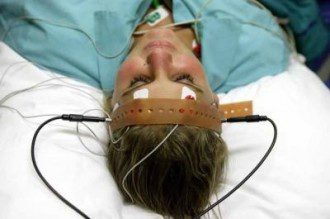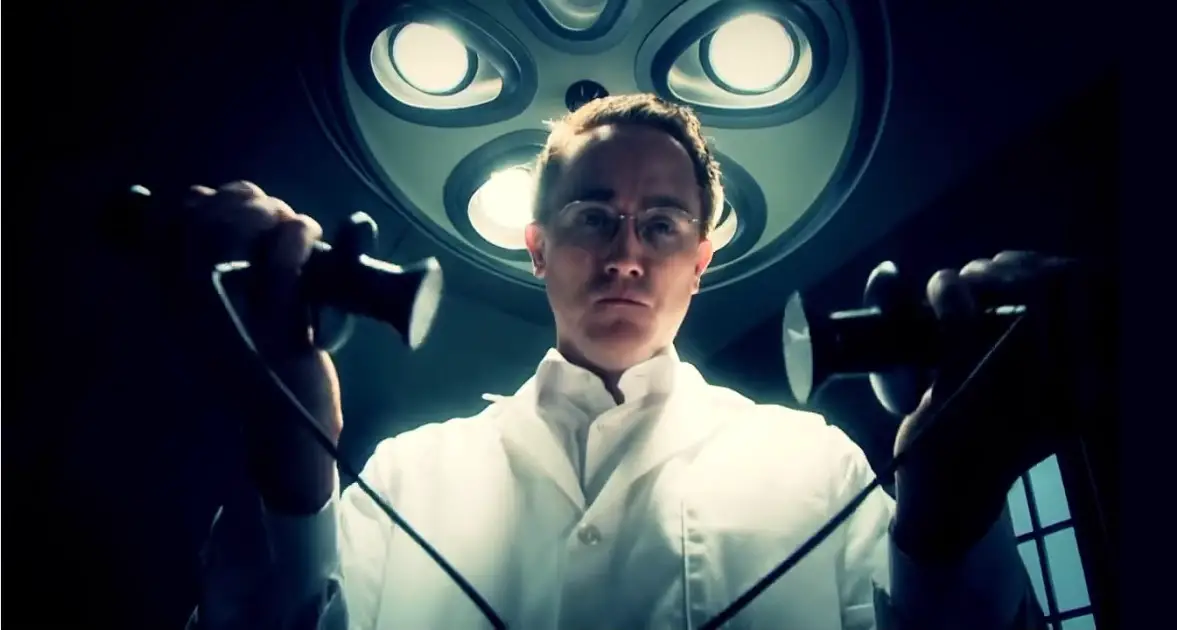6th April 2016
Contributing Writer for Wake Up World
“The FDA has initiated a proposal that would reclassify Electroconvulsive Therapy Devices (ECT) from its current category as a high risk device, to a lower risk machine with less regulatory controls. This is despite the federal agency’s admission that the ECT device has not been proven safe and effective.” ~ CCHR Documentaries
The Judge Rotenberg Center (JRC) in Canton, Massachusetts has a long history of controversy for how it handles disabled children and adults. The school has been condemned by the United Nations Special Rapporteurs on Torture, a variety of disability groups, Massachusetts governor Deval Patrick, and an FDA advisory panel.
What is it about the school’s protocol that has attracted such criticism? The answer lies in the way the school handles “unacceptable” behavior — by using frequent electric shocks as punishment. Former teachers at Rotenberg have described how mentally challenged children would writhe on the floor, screaming in pain after receiving the shocks. And yet, the school still has around 200 students, with more referrals in the pipeline. Rotenberg is the only designated school in the United States that uses electric shock for behavioral management.
[pro_ad_display_adzone id=”110028″]
But electroconvulsive therapy (ECT) in general is also widely used on young children, teenagers, those with autism all the way up to adults who struggle with depression, schizophrenia and bipolar disorder. And now the FDA is in the process of down-grading the classification of ECT to make it more easily accessible for treating so-called mental illness, against tremendous public outcry, including those who have survived the ‘treatment’ only to find their memory severely and permanently damaged, as well as increased levels of depression and suicidal thoughts.
Treatment for some, torture to others
“Electroconvulsive Therapy remains today a broadly used, highly dangerous, and very lucrative form of treatment for individuals suffering from emotional hardship.” ~ Citizens Commission on Human Rights
Electric shock is used around the world as a form of torture, yet in the United States, it’s considered a valuable tool in psychiatry. It’s simply labeled under a different name: electroconvulsive therapy. As Jim Marrs, investigative journalist and author, points out: in some countries, electric shock is used for ‘treatment’, where in other countries it’s used as torture. Here’s the catch: ECT is 33 times as powerful as what is used in torture.
Essentially, with ECT the brain is bombarded with an outrageous amount of electricity, which in turn causes a seizure. Strangely, there is little research showing that a single human being has ever been cured using electrical pulse therapy. In fact, the ‘therapy’ causes massive brain trauma by inducing grand mal seizures. The long-term safety and effectiveness of ECT treatment has not been demonstrated. Manufacturers of ECT devices continue to avoid FDA testing to determine whether or not it is a hazard to public health. However, with the use of ECT, billions in profits keep rolling in. Psychiatrists use ECT on one million people worldwide every year.
Electroconvulsive therapy can be deadly. Over 100,000 people have died while being treated with ECT, and countless others have brains that are so damaged, they are not functional. According to Dr. Moira Dolan, M.D., ECT is extremely damaging, destroys memory and increases suicide rates. “It doesn’t save anyones life, it destroys lives.”
“The major misconception most people have about ECT is that it’s ‘new and improved’, where in actuality, these improvements are cosmetic. The person isn’t shaking all over the table now, they are paralyzed instead. It isn’t improved, it is worse.” Dr. John Friedberg, neurologist.
As noted in “Stop FDA from Down-Classifying the Shock Device to a Class II Device Stop shock treatment,” risks involved with the use of ECT devices include:
- Adverse reaction to anesthetic agents/neuromuscular blocking. Pharmaceuticals used in the procedure to relax the muscles and sedate can hamper the patients ability to breathe spontaneously.
- Skin reactions. The contact points of the device may cause problematic immunological and/or allergic rashes.
- Cardiovascular complications. Convulsions triggered by ECT may cause arrhythmia (irregular heartbeat), ischemia/infarction (heart attack), hypotension (low blood pressure) or stroke.
- Cognition and memory impairment. The convulsive treatment can impair memory, namely post-treatment disorientation, anterograde and/or retrograde autobiographical memory impairment.
- Death. Complications may arise, including reactions to anesthesia, heart problems and stroke.
- Dental and Oral trauma. Dental fractures, dislocations and lacerations can occur as a result of strong muscle contractions occurring during treatment.
- Device malfunction. Faulty equipment, accessories, software and improper use may cause an excessive dose to be administered, resulting in skin burns and prolonged seizures.
- Manic symptoms. The treatment can induce hypomanic or manic disorders.
- Pain/discomfort. Mild to moderate pain may be experienced during the ECT treatment.
- Physical trauma. Inappropriate or inadequate pharmaceutical support can lead to injuries from uncontrollable violent moments during convulsions.
- Prolonged seizures. Patient may go into status epilepticcus (continued unremitting seizure).
- Pulmonary complications. During treatment, patients may experience apnea (no breathing) or aspiration (inhaling regurgitated stomach content).
- Worsening of psychiatric symptoms. ECT treatment can aggravate psychiatric conditions.
New reclassification sets a dangerous precedent
Psychiatrists and manufacturers are attempting to get the device classified to be on the same safety level as wheelchairs, without testing to establish if ECT is even safe in the first place. Furthermore, those who are trying to push through this legislation conveniently ignore all the evidence of the harm the therapy inflicts. You can read the proposal here.
To make matters worse, Congress is in the process of passing legislation that would allow medical devices to be used on individuals without informed consent. The bill has already passed the House and has 230 cosponsors.
“H.R.6, or the 21st Century Cures Act, essentially weakens the already weak standards for the approval process of prescription drugs and medical devices, solely benefiting the pharmaceutical industry while placing Americans directly in harm’s way as they unknowingly become guinea pigs.” [source]
Help stop this barbaric ‘treatment’ from becoming more widely used. Sign the petition, asking the FDA to halt moving forward with down-classifying electro convulsive treatment. And contact your representatives and demand that the 21st Century Cures Act fails in the Senate.
Electroshock: A Call to Action To Curtain Abusive ‘Treatment’
Article sources
- “Parents Defend School’s Use of Shock Therapy” New York Times
- http://www.fda.gov/downloads/AdvisoryCommittees/CommitteesMeetingMaterials/MedicalDevices/MedicalDevicesAdvisoryCommittee/NeurologicalDevicesPanel/UCM240933.pdf [PDF]
- https://www.gpo.gov/fdsys/pkg/FR-2015-12-29/pdf/2015-32592.pdf [PDF]
- http://www.fda.gov/AboutFDA/Transparency/Basics/ucm194438.htm
- http://www.cchrint.org/2016/01/07/fda-looks-to-expand-electroshock-use
About the author:
 Carolanne Wright enthusiastically believes if we want to see change in the world, we need to be the change. As a nutritionist, natural foods chef and wellness coach, Carolanne has encouraged others to embrace a healthy lifestyle of organic living, gratefulness and joyful orientation for over 13 years.
Carolanne Wright enthusiastically believes if we want to see change in the world, we need to be the change. As a nutritionist, natural foods chef and wellness coach, Carolanne has encouraged others to embrace a healthy lifestyle of organic living, gratefulness and joyful orientation for over 13 years.
Through her website Thrive-Living.net, she looks forward to connecting with other like-minded people from around the world who share a similar vision. You can also follow Carolanne on Facebook, Twitter and Pinterest.
Further reading from Carolanne Wright:
- Seed Bombs: A Creative (and Fun) Mission to Save the Bees and Butterflies
- Mind Control, Subliminal Messages and the Brainwashing of America
- Autistic Boy with Higher IQ Than Einstein Discovers Gift After Removal from State-Run Therapy
- Monsanto Charged with Crimes Against Nature and Humanity – Set to Stand Trial in 2016
- Dr Sebi: The Man Who Cures Aids, Cancer, Diabetes and More
- Politicians in California May Soon be Forced to Wear Corporate Sponsor Patches Like Nascar Drivers
- Plastic-Eating Mushroom Discovered in the Amazon Rainforest — A Solution for Our Trash Saturated World?
- Big Pharma and Organized Crime — They are More Similar Than You May Think
- Over 100 Scientific Studies Agree: Cannabis Annihilates Cancer
- Emotional Energetic Healing: The Future of Medicine is Here
- Why Every Parent Should Consider Unschooling
- The Greenhouse of the Future: Grow Your Own Food Year-Round With This Revolutionary System
- First U.S. City Produces More Electricity Than It Uses — With 100% Renewable Technology
[pro_ad_display_adzone id=”110027″]








